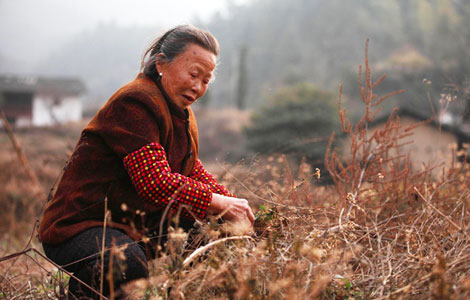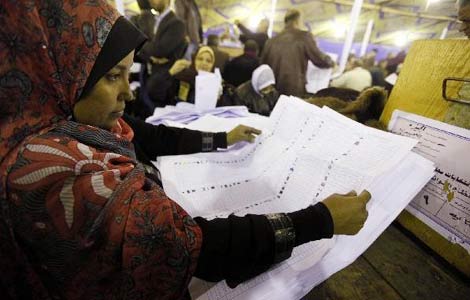Country Report on China's Participation in Greater Mekong Subregion Cooperation
Updated: 2011-12-16 20:11
(Xinhua)
|
|||||||||||
I. Executive Summary
The Mekong River, which originates from the Tanggula Mountain Range on the Qinghai-Tibet Plateau in China and runs 4880 kilometers southward through six countries, namely, China, Myanmar, Laos, Thailand, Cambodia and Viet Nam, is an important transnational river in Asia and even the world. The section in China is called the Lancang River. Since the 1990s, the international cooperation in the Lancang-Mekong subregion has received wide attention from the international community. Related countries and international organizations have carried out extensive cooperation, which has produced good results and forcefully facilitated economic and social development of the subregion.
In 1992, the Asian Development Bank (hereafter referred to as the "ADB") held the first ministerial meeting of the six countries in the Greater Mekong Subregion in Manila, the Philippines, where the ABD is based, marking the official launch of the GMS economic cooperation mechanism. At present, GMS cooperation covers China (Yunnan Province and Guangxi Zhuang Autonomous Region), Cambodia, Laos, Myanmar, Thailand and Vietnam, with a total area of 2,568,600 square kilometers and a combined population of about 326 million. Rich in water, biological and mineral resources, the Greater Mekong Subregion has enormous economic potential and development prospects. The countries in the Greater Mekong Subregion all enjoy time-honored histories, beautiful landscapes and colorful ethnic cultures. Over the long years, however, they had suffered backwardness in economic and social development due to a variety of factors. Since the beginning of the new century, GMS countries have been working for economic reforms, industrial restructuring and greater openness to the outside world. Accelerated economic and social development has become their shared objective.
In November 2002, the first GMS summit was held in Phnom Penh, Cambodia. The meeting adopted the Strategic Framework for the Next Ten Years of the GMS Program (2002-2012) and determined that the GMS summit should be held once every three years with the member countries taking turns to host the meeting. GMS cooperation was thus upgraded to the summit level and entered a new stage of comprehensive and rapid development. In July 2005, the second GMS summit was held in Kunming, China. The meeting identified the guiding principles for GMS cooperation, namely "Mutual respect, consultation on an equal footing, emphasis on practical results and gradual progress". It adopted and signed a number of cooperation initiatives and documents concerning transport and trade facilitation, protection of biodiversity and construction of information highways. GMS cooperation was thus taken to a new high. In March 2008, the third GMS summit was held in Vientiane, the Lao PDR. The meeting adopted the Vientiane Plan of Action for GMS Development 2008-2012, and signed a number of cooperation documents concerning the road map for power trade and the balanced and sustainable development of the economic corridors, bringing the cooperation to greater width and depth.
In the course of promoting GMS cooperation, the triennial GMS summit has played a crucial role in setting the targets, providing the direction, and introducing major measures for cooperation.
In nearly 20 years, thanks to the joint efforts of the ADB and all GMS members, the GMS cooperation has moved forward steadily, borne rich fruits, and played an active role in eliminating poverty and promoting the economic and social development of GMS countries. The project-oriented GMS cooperation has identified nine priority areas, namely, transportation, energy, telecommunications, the environment, agriculture, human resources development, tourism, trade facilitation and investment, and actively provided financial support and technical assistance to the member countries. By the end of 2010, GMS loans (grants) had financed 55 projects with a total investment of 13.8 billion dollars, of which 5 billion dollars was ADB loans, 4.3 billion dollars was the investment by GMS countries to match the loans, and 4.5 billion dollars was raised through co-financing. Altogether 172 technical assistance projects had received a total investment of 230 million dollars, of which 100 million dollars was ADB loans, 20 million dollars was the investment by GMS countries and 110 million dollars was raised through co-financing.
In December 2012, the fourth GMS summit will be held in Naypyitaw, Myanmar. An important agenda of the meeting is to discuss and formulate the strategic framework for GMS cooperation in the next 10 years. China stands ready to work with the other GMS countries to ensure the implementation of the various cooperation initiatives so as to take the GMS cooperation in all fields to greater width and depth, and contribute to the common development and prosperity of GMS countries.
Hot Topics
HIV/AIDS, Egypt protest, Thanksgiving, climate change, global economic recovery, home prices, high-speed railways, school bus safety, Libya situation, Weekly photos
Editor's Picks

|

|

|

|

|

|







